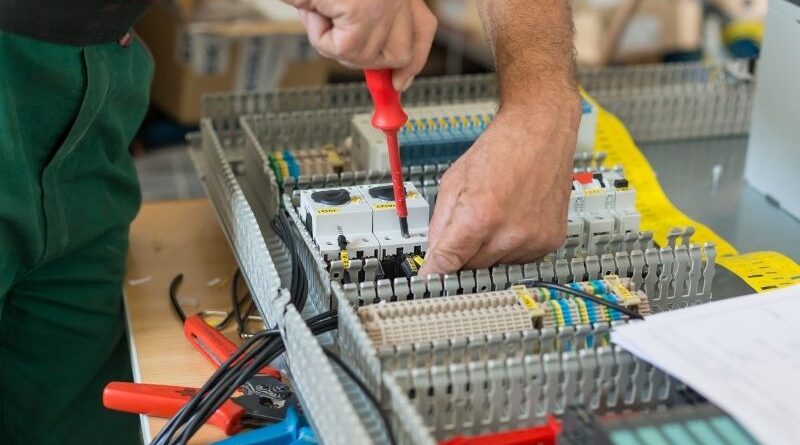
Welcome to a field where advanced technology performs the important task of protecting our most important power transmission lines. Ensuring uninterrupted power flow is of utmost importance in power distribution, especially in high and extra-high voltage transmission lines. Enter the world of “Impedance Relays in Distance Protection Strategies”, a field where the marriage of cutting-edge relay technology and the science of electrical impedance provides uncompromising protection against potential interference. In this article, we uncover the mechanisms that make impedance relays a cornerstone of distance protection and raise standards for network reliability and stability. Join us as we explore how these ingenious devices are changing the landscape of power transmission security and ushering in an era of enhanced protection and unprecedented efficiency.
Impedance relays for protection of transmission lines
Types of distance protection relays
The Distance Protection Relay family consists of the following types of relays:
- impedance relay
- reactance relay
- MHO relay or admission relay .
Join us on a journey into the world of impedance relays, discover how they work and discover how they contribute to the safe and reliable operation of power systems.
impedance relay
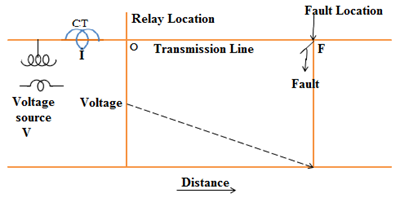
Structure of an impedance relay
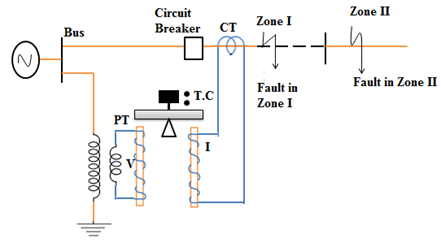
Impedance relay working principle
A simple form of EM relay with symmetric beam resistance is shown in the figure. It has a fixed beam and two electromagnets (EM). The zone voltage activates one EM through the TP, and the other EM is activated by the zone current through the CT.
Under fault-free conditions, the pull across the voltage element is greater than the pull through the current element and the trip circuit (CT) remains open.
As this type of relay is based on the circuit impedance , which in turn depends on the distance from the fault to the relay location, it is called a distance relay.
Operating characteristics compare the impedance of the circuit to the voltage at the relay location. Current creates a positive torque, called operating torque, and voltage has a negative torque, called Holding Torque .
This equation for the operating torque of an electromagnetic relay is:
T = K 1 EU 2 –K 2 v 2 –K 3
K 1 K 2 and K 3 are constants, K 3 is the torque due to the action of the control spring.
Neglecting the effect of the spring used, which is very small, the torque equation can be written as follows:
T = K 1 EU 2 –K 2 v 2
The following condition must be met for the relay to work.
v 2 /I 2 < K 1 /K 2
V/I < K, where K is a constant.
from V/IZ, Z
The above expression explains that the relay is about to trip when the ratio between V and I, that is, the measured value of the line impedance, is equal to a certain constant. The relay is activated when the measured value Z is less than the specified constant. This given constant is a design value that depends on the total length of the HT/EHT supply line to be protected.
Operating characteristics of an impedance relay
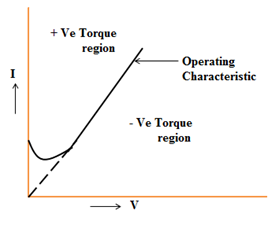
RX Chart
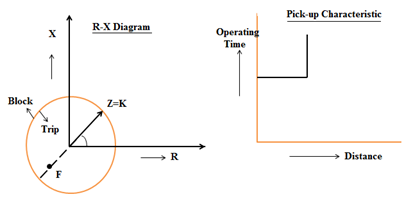
Directional Impedance Relay
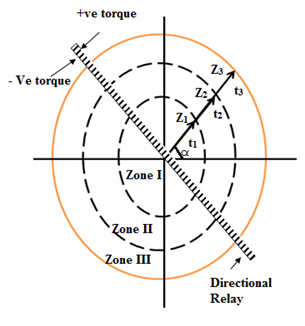
At each relay location there are three impedance relays and a directional unit connected in series with the impedance relays.
The impedance of Zone I is Z 1 If an error occurs in F 1 the impedance of Zone I is reduced to a value lower than the preset value (Z 1 ). This increases the size of the circuit and activates the relay.
For each fault in Zone II F 2 In the figure, the impedance of Zone I does not change and the relay does not work.
Protection zones through impedance relays
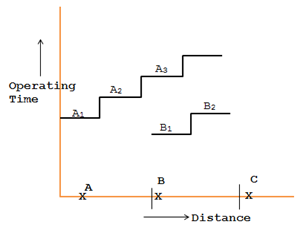
The second unit protects the remainder, 20% of the protected line and 50% of the shorter adjacent line. This protection zone is called second protection zone . The dual zone device works after a certain delay. Its operating time is 0.2 to 0.5 seconds.
The third unit serves as a backup for the adjacent line. This unit's configuration includes the first line, which is the protected line plus the second longest line plus 25% of the third line. The relay operating time is 0.4 to 1 second.
For cost reasons and due to the limited space available in the relay panel, today only one measuring unit is used for all three protection zones. The time unit determines the distance settings for zones II and III. The gradual temporal distance Characteristics of impedance relays are shown in the figure.

